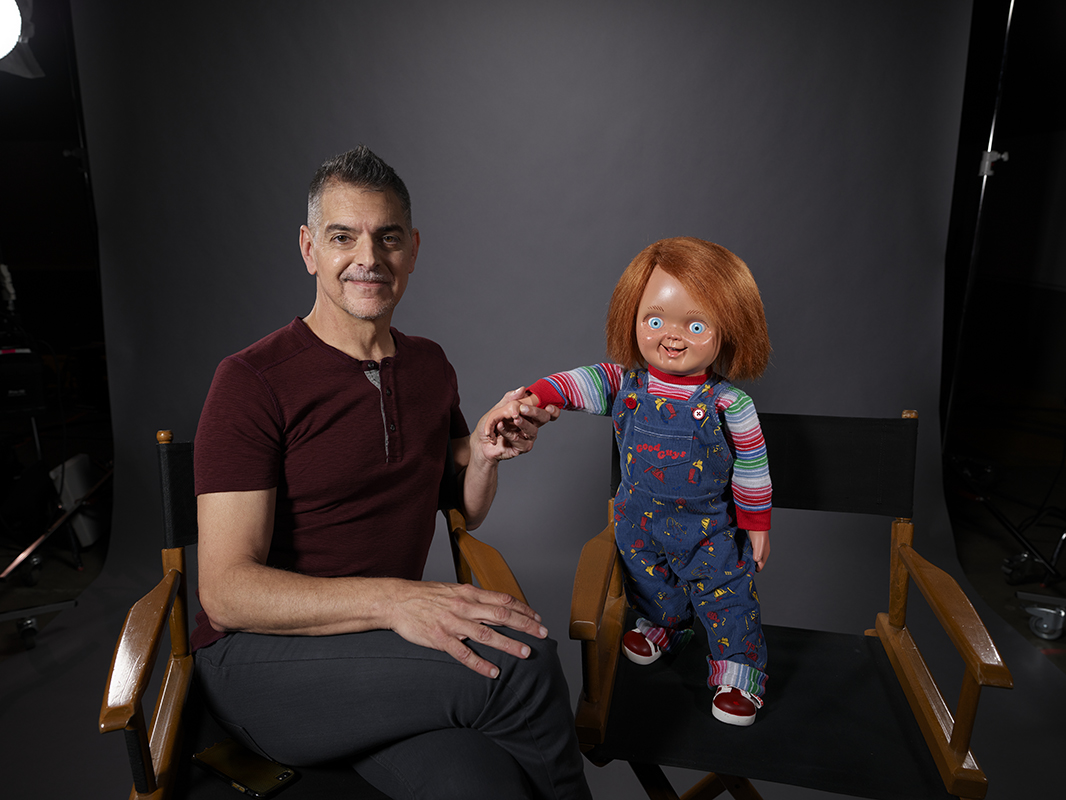Table of Contents Show
The Spooky Season might be over, but that doesn’t mean the fright nights stop. As the year slowly wraps up, so do many television shows finish their season. One of those shows is Syfy and USA Network’s Chucky (2021). This series is the latest installment in creator Don Mancini’s Child’s Play franchise. The television show has recently been trending on social media due to clips of fan-favorite slasher doll Chucky (voiced by Brad Dourif) being inclusive towards the queer community. However, some internet users might not realize that Mancini’s horror franchise has been inclusive towards the queer community for years. As a note, this article will only be going over Mancini’s works; therefore, the reboot Child’s Play (2019; Lars Kelvberg) will not be included.
Child’s Play (1988; Tom Holland), Child’s Play 2 (1990; John Lafia), And Child’s Play 3 (1991; Jack Bender)
Admittedly, the first three films in the franchise do not include any explicit inclusivity towards the queer community. Instead, Mancini spends this time building the storyline between Chucky and Andy Barclay (Alex Vincent).
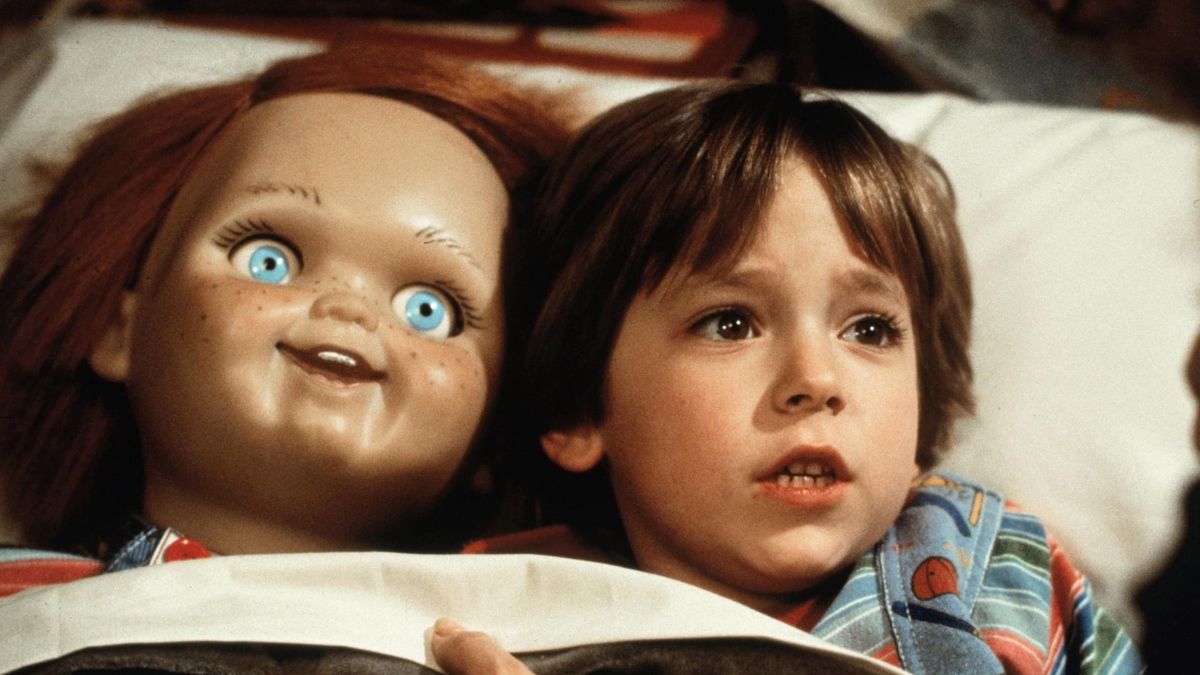
For those who aren’t familiar with the franchise, serial killer Charles Lee Ray (Brad Dourif) is chased down by homicide detective Mike Norris (Chris Sarandon) through the streets of South Side, Chicago. Eventually, Ray breaks into a toy store, where he gets shot by Norris. As Ray is dying, he is surrounded by Good Guy dolls and performs a voodoo spell that transfers his soul into one of the dolls. By transferring his soul into a doll, Ray is able to continue his killing spree. After transferring his soul into the doll, Ray (known as “Chucky”) is given as a gift to a six-year-old, Andy Barclay. Soon, Chucky learns that his soul will get trapped into the doll unless he transfers it into Andy’s body. The following two films follow the same premise of Chucky going after Andy through his foster home and military school, respectively, to transfer his soul.
Bride of Chucky (1998; Ronny Yu)
The fourth film installment is where the Child’s Play franchise shifted focus, as the film takes a more humorous and campy approach than the previous three. In Bride of Chucky, instead of continuing with the main plot of Chucky going after Andy, the film focuses more on Chucky and the addition of Chucky’s killing partner and lover, Tiffany Valentine (Jennifer Tilly). Additionally, unlike its predecessors, Bride of Chucky begins to be more open with its inclusivity towards the queer community.
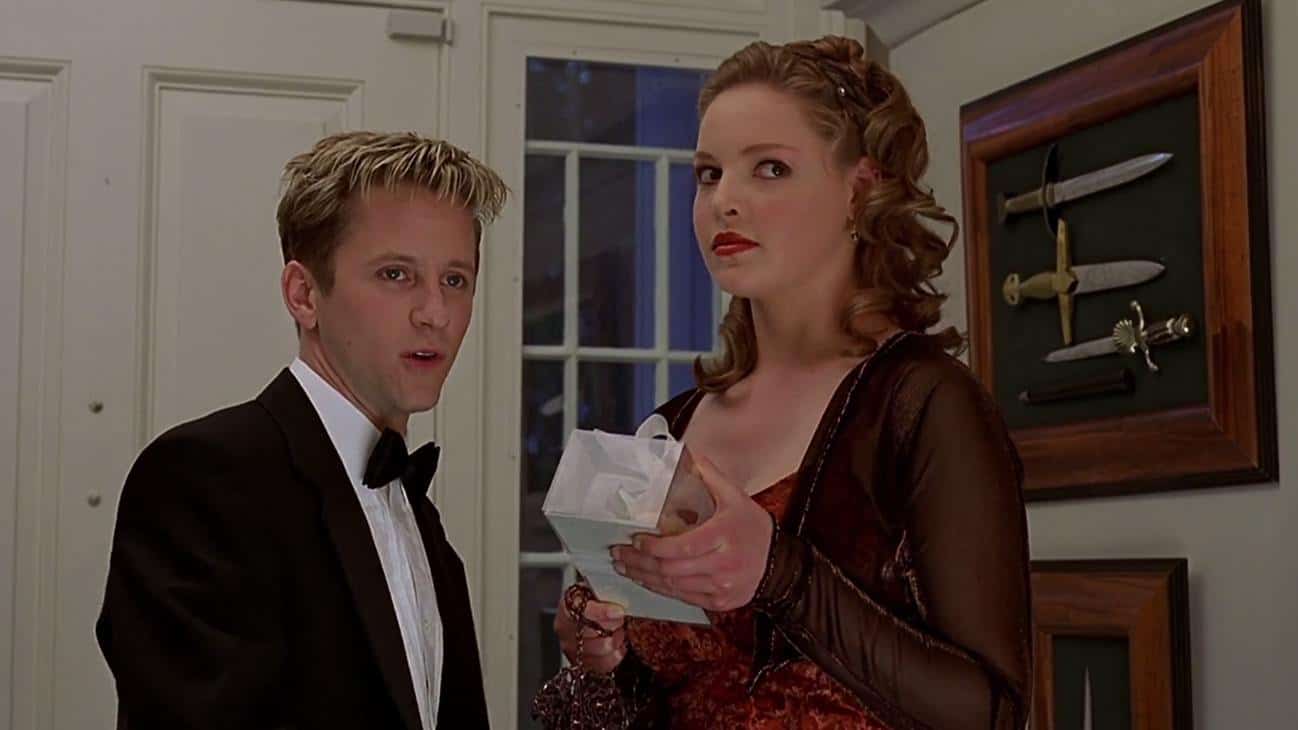
In the film, there is one example of Mancini showing his inclusivity through the character of David (Gordon Michael Woolvett). David is a queer character. While Mancini didn’t dive deep enough into David’s character and sexuality, the film does mention that the teen has dated a boy in the past. In a scene near the middle of the film between Katherine Heigl’s character, Jade, and David, Jade stated, “David, do you remember when you were seeing Brad Barker?” to which David replied fondly, “Oh! Vividly. Whoo!” A few seconds later, David admits that he loved Brad, but their relationship didn’t work out as Brad’s mother was homophobic.
Seed of Chucky (2004; Don Mancini)
Out of all the films within the Child’s Play franchise, Seed of Chucky is the film that includes the most prominent moments of inclusion of the queer community. One of the most memorable aspects of this film is the addition of Chucky and Tiffany’s child. Throughout the film, their child, referred to as Glen, struggles with their identity. Near the end, when Chucky and Tiffany argue which baby their son’s soul should be transferred into, Glen admits that sometimes he feels like a boy and sometimes he feels like a girl. Ultimately, Chucky and Tiffany accept their child’s gender fluidity and refer to them as Glen and Glenda.
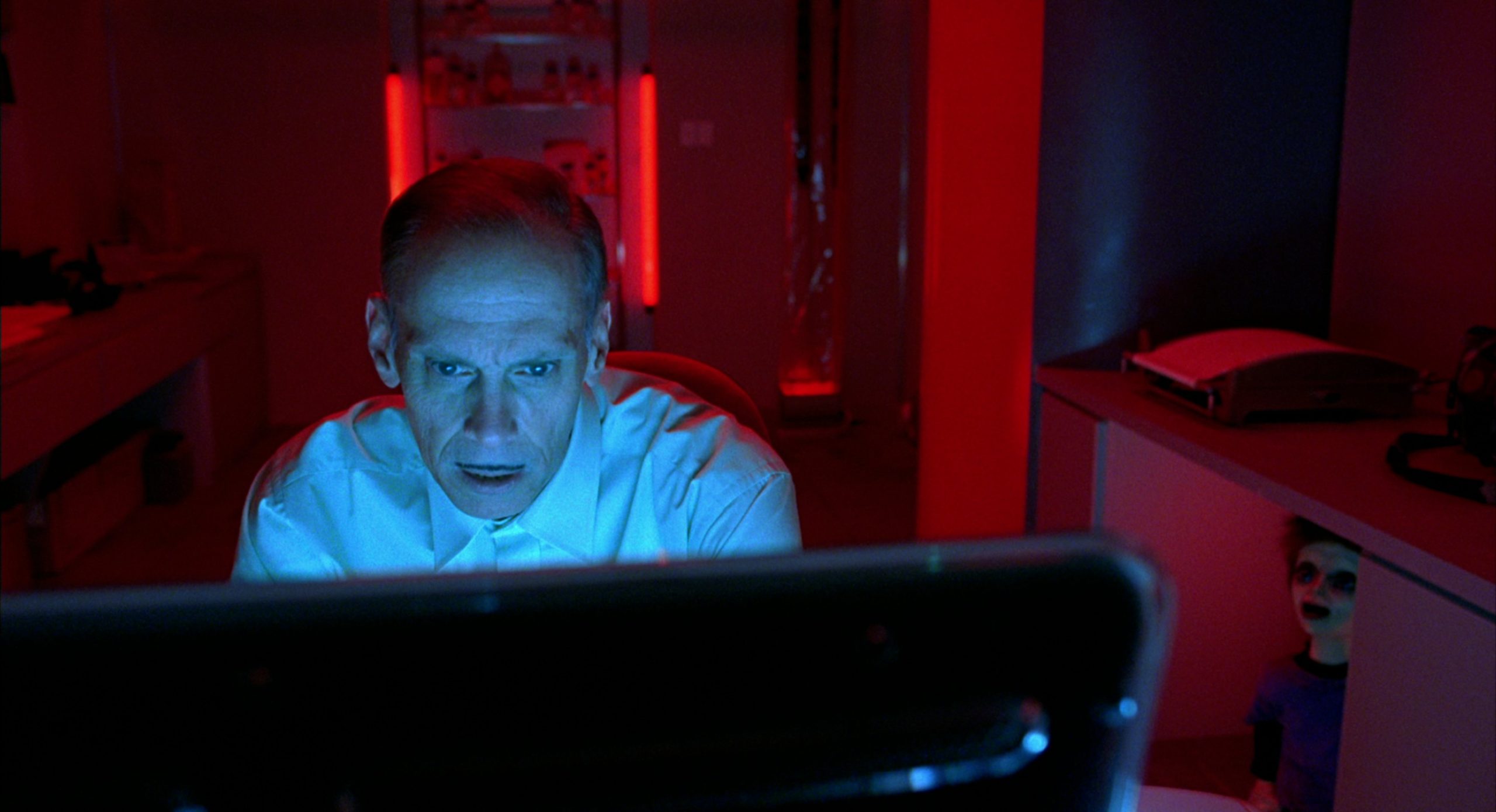
One of the more subtle examples of queer inclusivity in the Child’s Play franchise is John Waters‘ role as photographer Pete Peters. Waters’ inclusion is important because Waters is an openly gay man. More importantly, Waters is a talented creator best known for his transgressive cult films, which feature drag queen Divine, such as Multiple Maniacs (1970; John Waters) and Pink Flamingos (1972; John Waters).
Curse of Chucky (2013; Don Mancini)
In the sixth installment of the Child’s Play franchise, the film ventures back into the main storyline and brings back the straightforward horror that viewers have seen in the first film. In Curse of Chucky, a Good Guy doll that calls itself “Chucky” mysteriously appears at the home of paraplegic Nica Pierce (Fiona Dourif) and her mother Sarah (Chantal Quesnelle). On the same night which Chucky arrives, Sarah is found dead from a stab wound, but it is ruled as a suicide. Thus, starting the murder cycle on the Pierces.
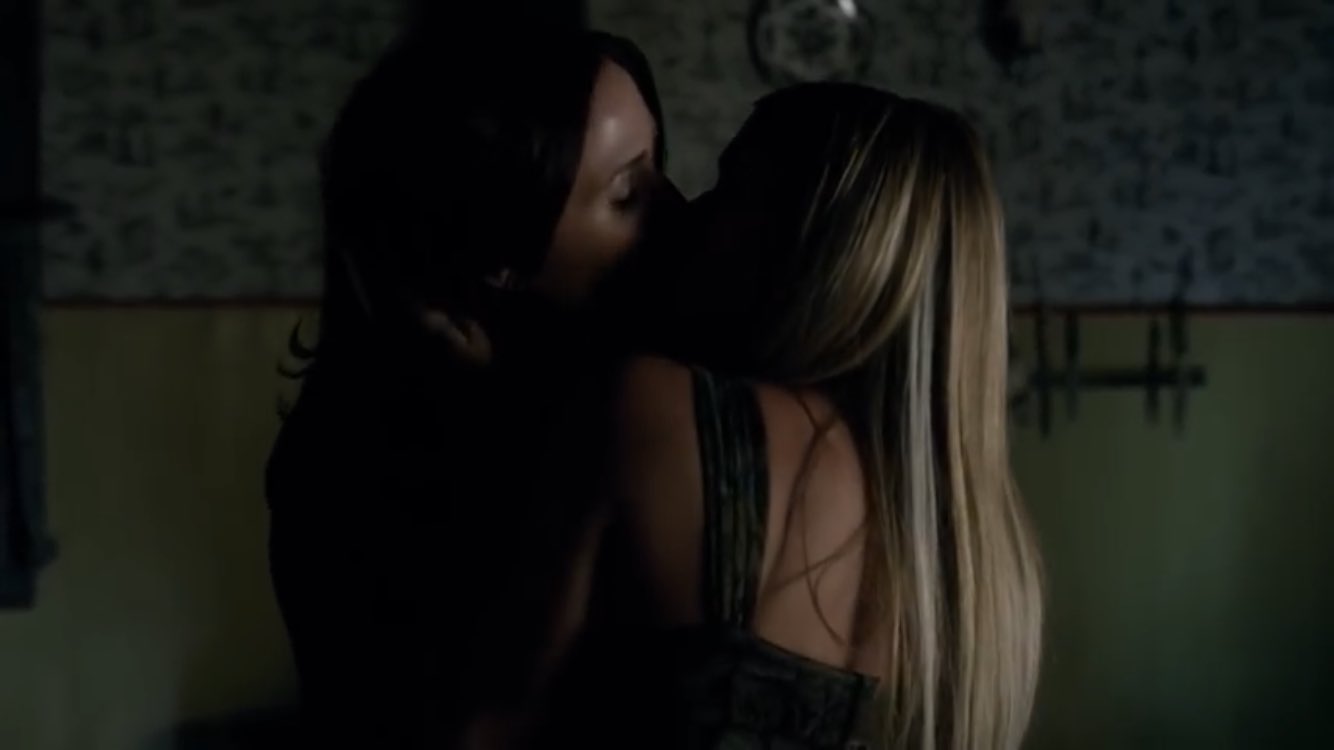
Since Curse of Chucky goes back to the source material, meaning it is not as humorous as its previous two films, there aren’t as many examples of inclusion of the queer community. The only criterion is that Nica’s sister Barb (Danielle Bisutti) is having an affair with her daughter’s live-in nanny Jill (Maitland McConnell). In the film, there is a scene in which the two women kiss and try to have some video call fun before Jill ends up getting killed by Chucky.
Cult of Chucky (2017; Don Mancini)
The seventh film installment continues the main storyline, which follows Nica in a medium-security psychiatric hospital after being framed by Chucky for the murders of her family. Since Cult of Chucky focuses more on the plot, there aren’t as many examples of inclusivity of the queer community. However, two instances of inclusivity in this film do show up. The first is when Carlos (Zak Santiago), a nurse at the psychiatric hospital, shares with Nica that he has a husband who suffers from MS. While this tidbit of information isn’t much, this shows Mancini is doing his best to be as inclusive of the queer community in any way possible.
The other moment is near the end of the film, where Chucky transfers a part of his soul into Nica’s body and meets up with Tiffany outside the psychiatric hospital. In this scene, Tiffany and Chucky kiss (as seen in the video). The kiss between the two is important due to showing that Tiffany may be queer because she is not put off at the fact that Chucky is not in a male body and continues to kiss him in Nica’s body.
Chucky (2021-)
Instead of another film installment, Mancini decided to branch out and create a television series that serves as a sequel to Cult of Chucky. The show takes place in Charles Lee Ray’s hometown Hackensack, New Jersey, about two weeks after the events of Cult of Chucky. In this series, 14-year-old Jake Wheeler (Zackary Arthur) buys a Good Guy doll at a yard sale to use for his art project. However, Jake later discovers that a piece of Chucky’s soul possesses his Good Guy doll. After Jake’s discovery, Chucky begins killing individuals in Hackensack.
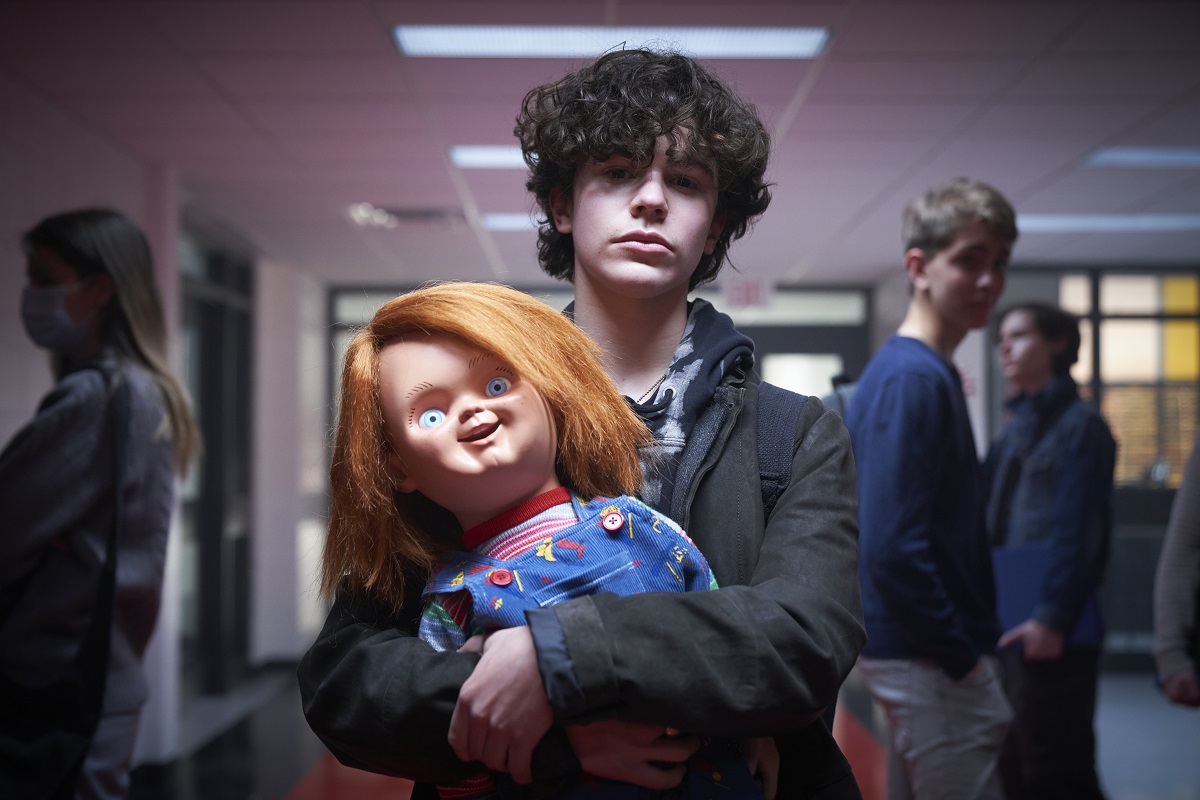
Unlike the films, the television show is more open to its inclusivity towards the queer community. Throughout the eight-episode season, there are various moments within that show the television series tackling sexuality.
Episode One: “Death By Misadventure”
In the first episode, Mancini decides to dive right into queer inclusivity in an awkward family dinner scene between Jake, his father, Jake’s uncle, aunt, and cousin, Junior. During this scene, Jake is revealed to be gay, and it’s clear that Jake’s father isn’t happy with the revelation as he slams his glass onto the floor and angrily says, “Would you give it a rest? He’s 13 years old. He doesn’t know what [referring to Jake’s sexuality] is.”
Episode Two: “Give Me Something Good To Eat”
In this particular episode, one scene went viral on social media platforms, mainly TikTok and Twitter. In the scene (see video), Chucky and Jake are talking, and Chucky says that he has a queer kid. Chucky then confirms that his kid is gender-fluid. When Jake asks Chucky if he’s cool with having a queer child, Chucky replies almost in disbelief, “I’m not a monster, Jake.” This particular scene had gone viral because many people could not believe the fact that Chucky, a homicidal doll, was more accepting of the LGBTQ+ community than some people they are close to in real life.
Episode Five: “Little Little Lies”
During the first five episodes of Mancini’s show, viewers see Jake coming to terms with his sexuality and struggling with a crush on his classmate, Devon (Björgvin Arnarson). It isn’t until this episode that the two teenagers finally do something about their respective crushes. In one scene between Jake and Devon, the two are in their school’s hallway, and they hold hands. Later in the episode, the two kiss. Jake and Devon aside, Tiffany’s sexuality is explored more in-depth. In Cult of Chucky, Tiffany didn’t care that Chucky was in a woman’s body. This continues near the end of the episode in a scene in which Tiffany and Chucky, who are still in Nica’s body, are putting on some sexual show for a gagged man and tied up in a chair.
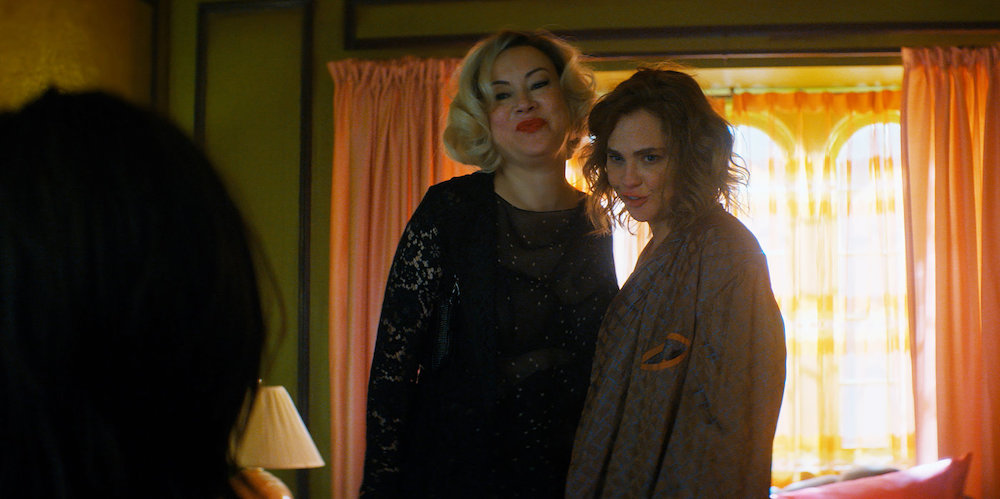
Episode Eight: “An Affair To Dismember”
In the season finale of Mancini’s television series, two moments of queer inclusion occur. One of the biggest ones is when Chucky (the doll) tries to make Tiffany kill Nica (who is currently in charge of her body). However, Tiffany hesitates, making it clear that she must hold some sort of romantic feelings towards Nica. In addition, when Chucky notices Tiffany not moving to immediately kill Nica, he questions Tiffany’s love and loyalty to him. He asks, “Who is it are you afraid of losing, Tiff? Me or [Nica]?” Eventually, Tiffany answers the question by slicing off Chucky’s head. In this episode, another moment of queer representation is with Jake, and his crush Devon made up and kissed one another (they had broken up in a previous episode) and began to refer to one another as boyfriends.
The Reason For Child’s Play Queer Inclusivity
For casual viewers of the Child’s Play franchise, they might be unaware of the reason on why Mancini continues to include queer inclusivity in his films. The reason being is that Mancini is one of the few openly gay creators in the slasher genre.
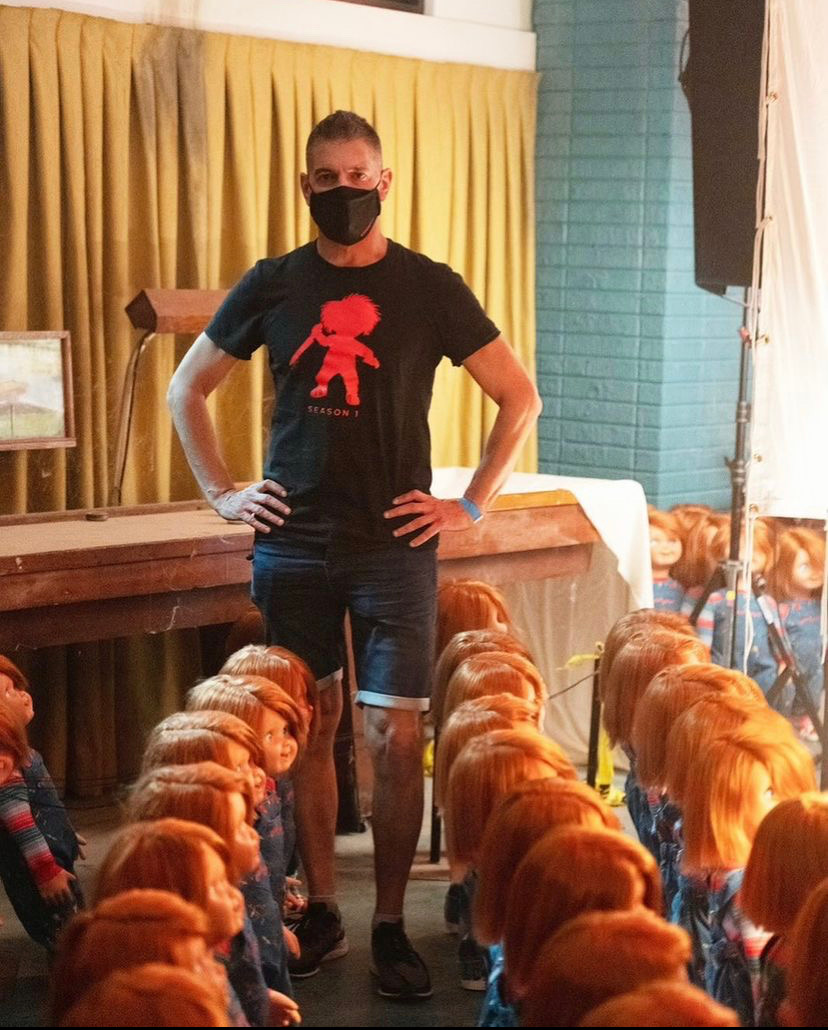
In an interview that Mancini did with The New York Times, Mancini admitted that Chucky is the most personal because some scenes are based on his own experiences of being gay. To be more specific, when filming the scene in which Jake and his father were arguing over Jake’s sexuality, Mancini stated that “it was cathartic” to see it being acted out because Mancini had experienced abuse and bullying from his own father regarding his sexuality (( Piepenburg, Erik. “Chucky Returns to Terrorize TV. His Creator Couldn’t Be Happier.” The New York Times. 11 Oct 2021. )).
The Future Of Child’s Play And Its Impact
Some causal viewers may not realize that many of the films within the genre tackle themes of sexuality and even racism within its subtext when it comes to horror. With Don Mancini’s Child’s Play franchise, Mancini is able to explore the theme of sexuality and queerness in his work while still providing his audience with content that can be digested casually.
With Mancini exploring sexuality and queerness in his work, it can help create a dialogue with viewers about those topics — which happened when the clip from episode two had gone viral. Since Mancini had skillfully included gender-fluidity and young queer romance in his work, it leaves many viewers wondering what he will include in his next installment of the Child’s Play franchise.
